The Net Promoter Score (NPS) is a powerful metric to gauge customer satisfaction and loyalty. But as with any measure, its accuracy and reliability depend on the underlying sample size.
In this post, we'll unpack the factors to consider when determining your NPS sample size, discuss why it's so crucial, and guide you through the process of calculating the optimal number of responses.

Why does NPS sample size matter in surveys?
In any customer survey, including NPS, the sample size plays a pivotal role in determining the accuracy and reliability of the results.
A larger sample size leads to a reduced margin of error, giving you a clearer picture of customer sentiment and helping you to make well-informed business decisions.
Conversely, small sample sizes can produce skewed or misleading results, which may lead you to make erroneous assumptions about customer satisfaction and loyalty.
Before we proceed any further, here's an example of an NPS survey:
Understanding sampling errors
Sampling error, a term often used in the context of statistics and survey research, is the difference between the results obtained from a sample and the true results that would be obtained if the entire population was surveyed.
It occurs because a sample is only a small representation of the entire population, and there is inherent variability in the process of selecting a sample.
Sampling error is affected by factors such as sample size, sampling method, and the variability of the population being studied.
Generally, as the sample size increases, the sampling error decreases, and the results become more accurate and representative of the population.
The margin of error is a measure of the uncertainty in the results due to sampling error. It represents the range within which the true value is likely to fall, given a specific confidence level.
The margin of error depends on the sample size, with smaller margins of error requiring larger sample sizes. As a general rule, the larger your sample size, the more accurate and reliable your NPS results will be.
Calculating your NPS margin of error
To identify the necessary sample size that will produce statistically valid outcomes that reflect your whole customer base, you need to work out your NPS survey margin of error.
Follow the formula below:
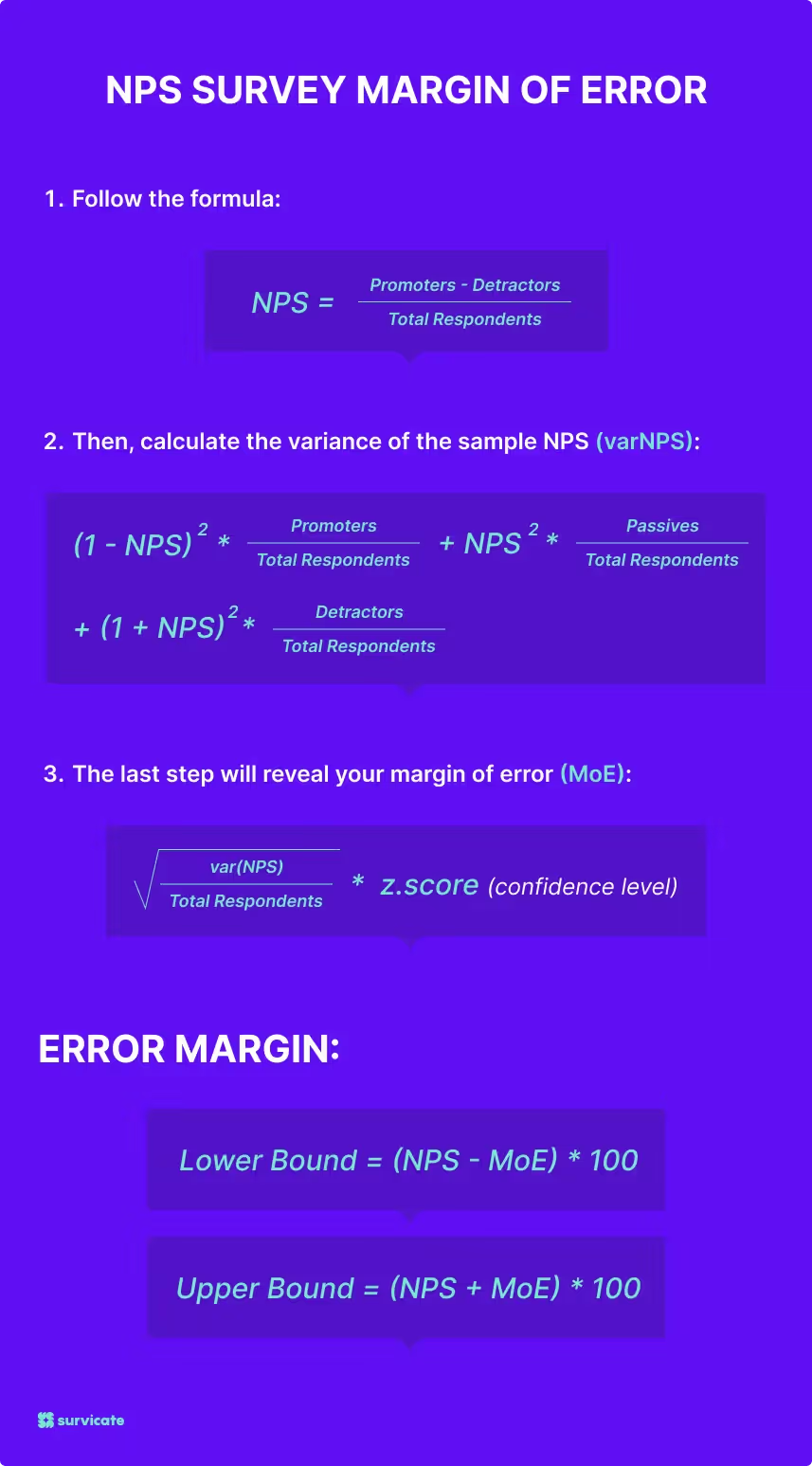
Desired confidence level:
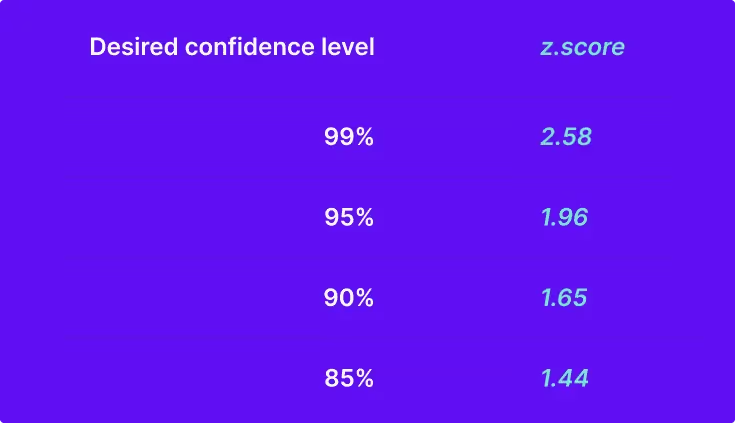
Here's an example of how to use the formula:
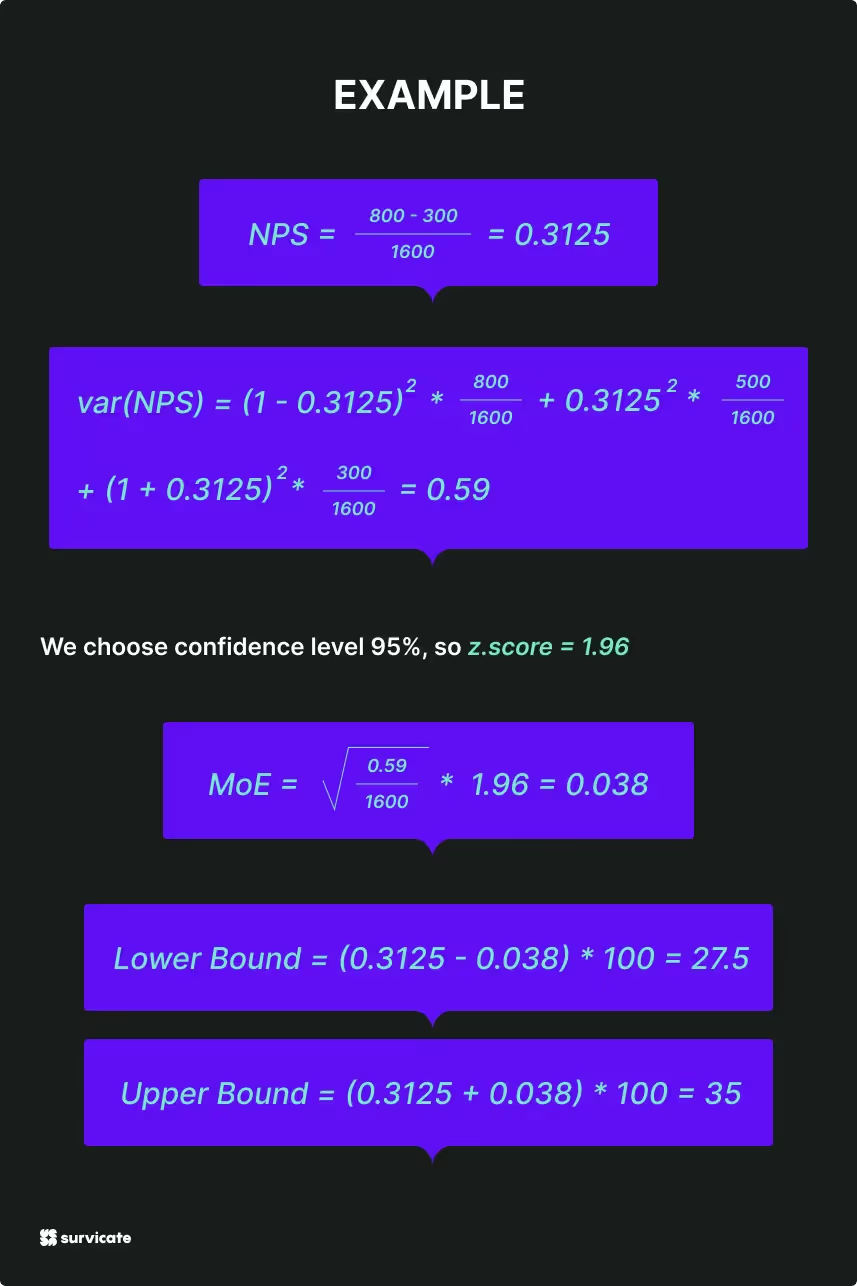

Given these inputs, we can say our confidence is at 95% that the target population’s NPS score is somewhere between 27,5 and 35.
Crafting your NPS sample size step by step
Now we’ll show you how to calculate the perfect sample size for your NPS survey, ensuring that you strike the right balance between accuracy, reliability, and cost-effectiveness.
Pinpoint your confidence level
Confidence levels reflect the probability that your survey results will fall within a specific range. Popular choices are 90%, 95%, and 99%.
A higher confidence level means that you're more certain that the survey results accurately represent the true opinions of your customer population.
However, higher confidence levels require larger sample sizes, which can be more time-consuming and expensive to obtain.
Set your margin of error
The margin of error defines the range within which the true value is likely to fall, given your chosen confidence level.
Lower margins of error yield more accurate results but necessitate larger sample sizes.
Common margins of error include 5%, 3%, and 1%. When setting your margin of error, consider the level of precision required for your specific use case, as well as the resources available to collect survey responses.
Estimate your population size
The population size represents the total number of potential NPS survey respondents in your target audience. If you're uncertain, opt for a conservative estimate to prevent underestimating your required sample size.
Keep in mind that for very large populations, the required sample size tends to plateau, meaning that only a marginal increase in sample size is needed to maintain the same level of accuracy and reliability.
Use a sample size calculator
Online tools, such as Survicate’s calculator, can help you calculate the ideal sample size for your NPS survey based on the factors above.
Simply input your preferred confidence level, margin of error, and population size, and the calculator will deliver the optimal sample size.
Online calculators use well-established statistical formulas to ensure that your sample size meets the desired level of accuracy and reliability.
Adjust for the expected response rate
Not everyone in your target population will respond to your NPS survey, so it's essential to account for your anticipated response rate when determining your sample size.
To do this, divide your calculated sample size by the expected response rate (expressed as a decimal).
For example, if your ideal sample size is 500 and you expect a 50% response rate, you'll need to send your survey to 1,000 customers (500 / 0.50) to achieve the desired sample size.
Boosting your NPS sample size
To ensure your NPS survey achieves the necessary sample size, consider the best practices below. Each of these strategies is effective in increasing response rates and, in turn, maximizing the accuracy and reliability of your NPS data.
Time your survey to perfection
Maximize response rates by sending your NPS survey at the right moments, such as immediately following a customer interaction or during periods of heightened engagement.
Survey response rates tend to be higher when customers have recently interacted with your brand, as their experiences and opinions are still fresh in their minds.
Streamline your NPS survey
Focus on the essential NPS question: "How likely are you to recommend [company/product/service] to a friend or colleague?"
Keeping your survey brief and straightforward will encourage more respondents to participate, as they won't be overwhelmed by lengthy or complex questions.
You can also improve the user experience by using clear and concise language, employing a user-friendly survey design, and optimizing for mobile devices.
Diversify your channels
Reach a broader audience by distributing your NPS survey across multiple channels, including email, SMS, in-app notifications, and social media.
Diversifying your distribution channels ensures that you reach customers where they're most comfortable and engaged, increasing the likelihood that they'll respond to your survey.
Personalize your survey invitations
Personalizing your survey invitations can help you establish a connection with your customers and increase response rates.
Address your customers by their name, reference their recent interactions with your brand, and explain the purpose of the survey. By showing customers that their feedback matters, you'll encourage more of them to share their opinions.
Entice participation with incentives
Offer rewards such as discounts or entries into prize drawings to motivate more respondents to complete your survey.
Survey incentives can be a powerful tool for increasing response rates, but be cautious not to create bias in your NPS survey results by attracting respondents who are only interested in the reward rather than providing genuine feedback.
The kind of incentives you offer will depend on the product or service you sell and your budget. They can include:
- extended trial subscriptions
- gift cards
- loyalty programs
- access to special features
- discounts
Gently remind non-respondents
Boost response rates and sample size by sending polite reminders to those who haven't yet completed your survey.
Space out your reminders to avoid overwhelming customers and use a respectful tone to maintain a positive relationship. Be sure to track response rates and adjust your reminder strategy as needed.
Create your NPS survey with Survicate
A robust sample size is the foundation of accurate and reliable NPS results. By understanding the factors that influence sample size and employing strategies to maximize it, you’ll be making sure that the data you receive can be used ot make informed decisions.
To run a successful NPS survey, you also need a versatile and reliable tool that will allow you to automate the process. Survicate provides everything you need to create and analyze your NPS surveys.
It also comes with features that will help you significantly increase your response rates, such as embedding the first question in an email and counting responses even from partially answered NPS surveys.
What’s more, you can connect Survicate to your favorite tools, such as HubSpot, Slack, and Intercom, via native, one-click integrations and share your data seamlessly.
Dive into the world of customer feedback analysis with Survicate's free account. Start your 10-day trial today, with access to essential features, here, and check out our pricing to see our affordable plans.









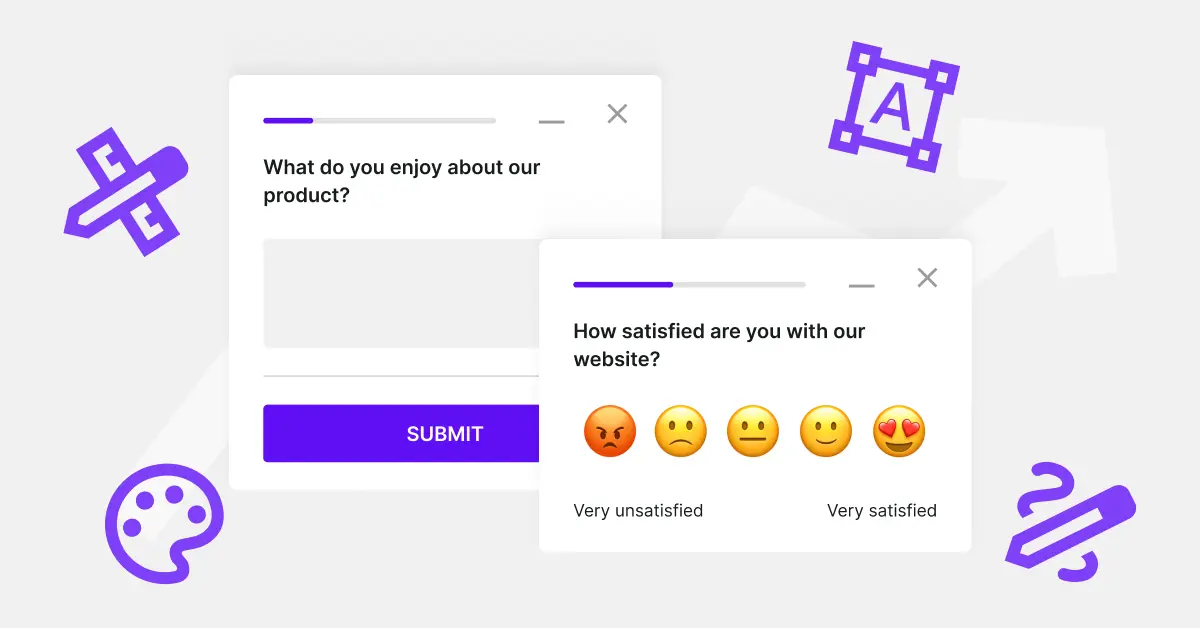
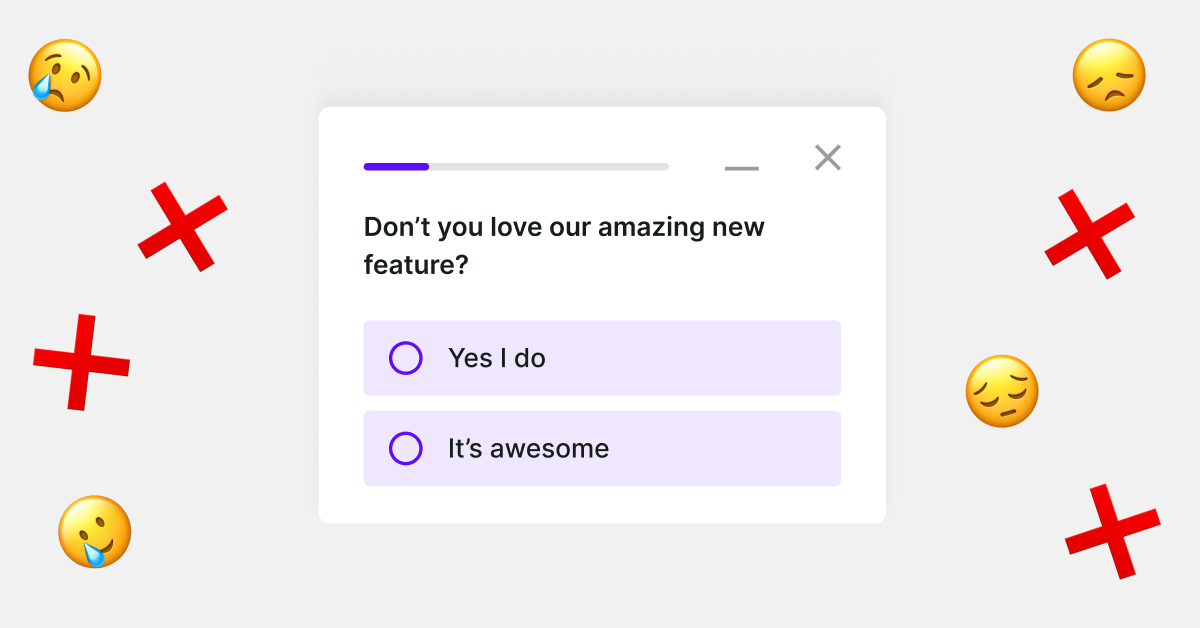
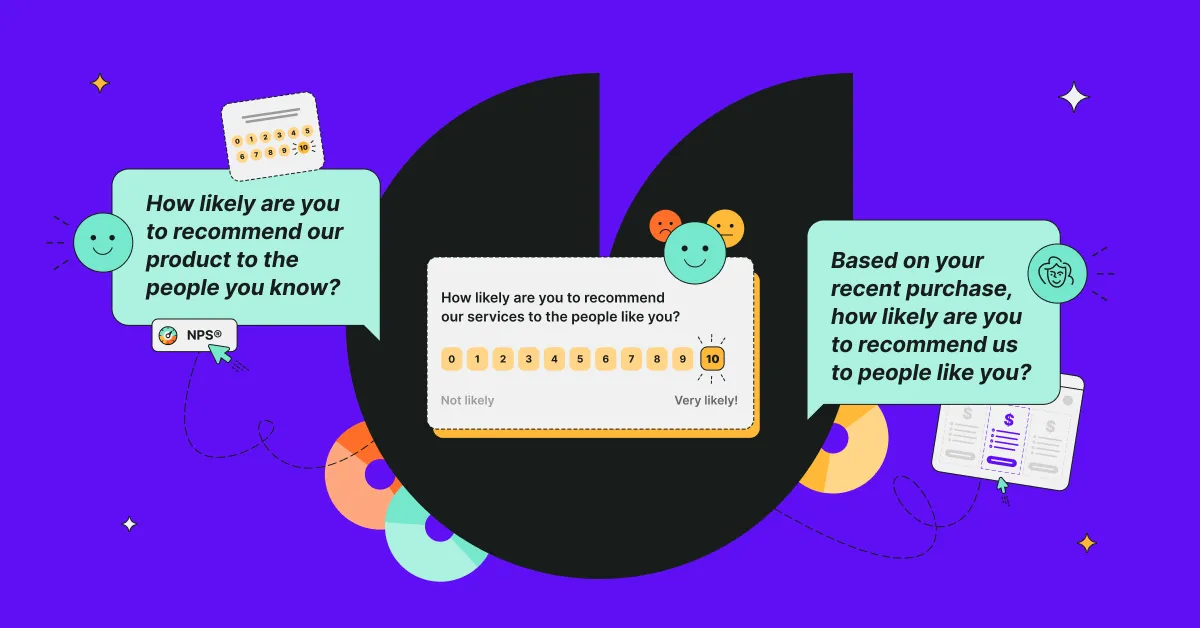
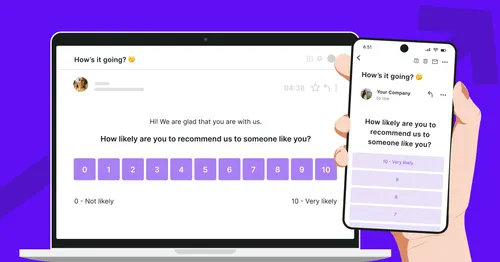
.svg)

.svg)



